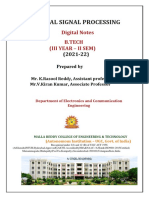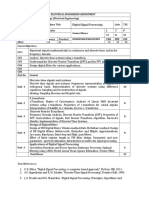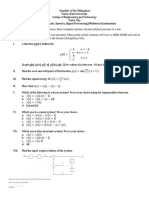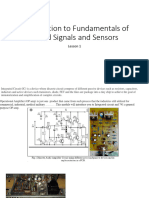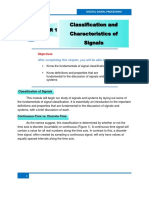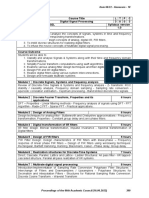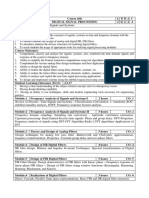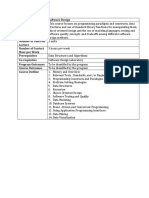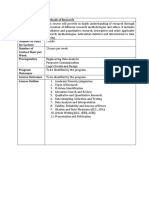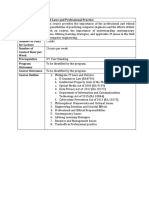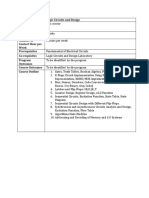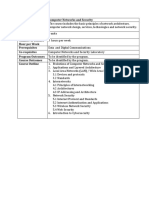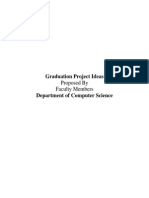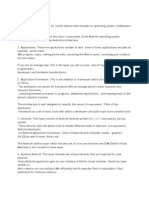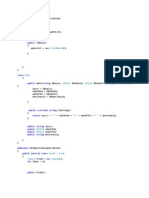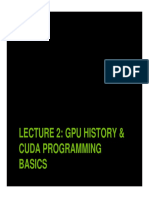0% found this document useful (0 votes)
424 views1 pageDigital Signal Processing
This 3-unit course on Digital Signal Processing covers sampling and quantizing signals, linear time-invariant systems, using frequency as an analysis domain, and filter design. The course meets for 3 hours per week, has prerequisites in Feedback and Control Systems, and a co-requisite laboratory. The course outline includes topics like convolution, transforms, sampling, filtering and multimedia processing.
Uploaded by
prince_kc2002Copyright
© © All Rights Reserved
We take content rights seriously. If you suspect this is your content, claim it here.
Available Formats
Download as DOCX, PDF, TXT or read online on Scribd
0% found this document useful (0 votes)
424 views1 pageDigital Signal Processing
This 3-unit course on Digital Signal Processing covers sampling and quantizing signals, linear time-invariant systems, using frequency as an analysis domain, and filter design. The course meets for 3 hours per week, has prerequisites in Feedback and Control Systems, and a co-requisite laboratory. The course outline includes topics like convolution, transforms, sampling, filtering and multimedia processing.
Uploaded by
prince_kc2002Copyright
© © All Rights Reserved
We take content rights seriously. If you suspect this is your content, claim it here.
Available Formats
Download as DOCX, PDF, TXT or read online on Scribd
/ 1
